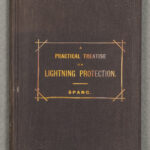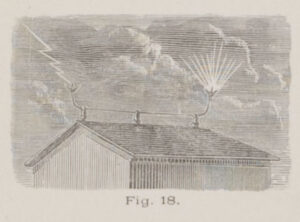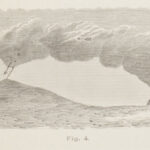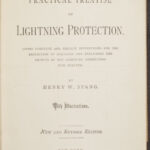“Of the many worthless devices employed for the protection of buildings, etc., from lightning,” the author writes, “that suggested by Mr. J.C. Chambers, of Newport, Ky., and recently introduced in the Western States, is the most unscientific and absurd.” Chambers’ “worthless” system is pictured here. The lightning was supposed to enter one end of the rod and be spewed out the other, dissipated into the air.
Spang quotes a number of “prominent electricians” who have likewise reviewed this system: “It is a scientific humbug.” “It is absolutely useless.” “Worse than useless.” And from Edison: “I do not wish to be drawn into any controversy on the subject, but will simply state that the rods on my buildings all connect with the earth.”
 The MIT Libraries received this book as part of the Vail Collection in 1912. By that time, architecture had been taught at MIT for more than four decades and its students would surely have been aware of the design and construction problems posed by lightning. At a time when lighting protection was on the rise, those making design and construction decisions would likely have welcomed these frank discussions of the best and worst protection systems on the market.
The MIT Libraries received this book as part of the Vail Collection in 1912. By that time, architecture had been taught at MIT for more than four decades and its students would surely have been aware of the design and construction problems posed by lightning. At a time when lighting protection was on the rise, those making design and construction decisions would likely have welcomed these frank discussions of the best and worst protection systems on the market.




